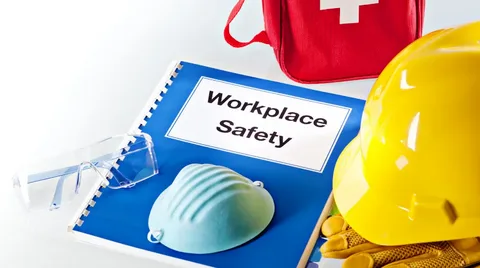
Compliance rules, equipment hazards, and the constant flow of new staff who need training can make keeping a workplace and uphill battle. It’s no surprise that safety managers are always searching for practical, affordable ways to make an impact. That’s where projected gobos come in. Companies like GoboSource have been changing how businesses approach safety communication.
Now, if you’re not entirely sure what a “gobo” is, don’t worry. In simple terms, a gobo is a small stencil or template that’s placed in front of a light source to project an image, symbol, or message onto a surface. You’ve probably seen them at events or theaters, but lately, they’re being used in workplaces to project safety signs, warnings, and reminders. The result? A safer environment that doesn’t rely on static stickers or fading paint. Here’s why using gobo’s a cost effective solution.
- Traditional Safety Signage Isn’t Cutting It Anymore
Think about how many warning signs you walk past in a single day—“Caution: Wet Floor,” “Forklift Zone,” “Wear PPE.” They’re everywhere, right? The problem is, they blend in after a while. People stop noticing them because they’re just part of the background noise of the workplace. That’s a serious issue when the goal is to keep everyone alert and aware of potential dangers.
Printed signs fade, peel, or get covered in grime. Floor stickers wear out fast, especially in areas with high traffic or moisture. And replacing them over and over again costs time and money. When signage becomes invisible due to wear or familiarity, its whole purpose is lost.
Projected gobos solve that visibility problem beautifully. The light projection cuts through the visual clutter of the workplace, creating a bright, high-contrast image that stands out. It can project directly onto floors, walls, or even machinery, and because it’s light—not paint or paper—it never fades or peels away. The moment someone walks into the space, the message catches their attention.
- Projected Gobos Are Surprisingly Affordable
At first, you might assume this kind of technology sounds expensive. Lights, projection systems, custom gobos—it all sounds high-tech, right? But in reality, it’s one of the most cost-effective long-term solutions for safety communication you can invest in.
Traditional signage has recurring costs: printing, laminating, replacing, and disposing of old materials. Over time, those costs add up, especially in industrial environments where floor signs wear out quickly. A projected gobo, on the other hand, is a one-time setup. You purchase the projector, insert the custom gobo design, and that’s it. The image stays crisp for years with minimal maintenance.
Plus, it’s easy to change the design later. Need to update a safety message or adjust the layout? You don’t need to reprint or repaint anything—just swap out the gobo slide. It’s that simple.
- Better Visibility and Better Safety Compliance
Here’s the thing about safety rules: they only work when people remember them. Workers can’t follow procedures they forget, and the reality is that humans get used to their surroundings fast. If you’ve ever walked past a faded floor marking for years without noticing it, you get the point.
Projected gobos break that pattern. Because the image is bright and dynamic, it stands out—even in areas with low light or heavy distractions. You can project safety reminders right where they matter most: at entry points, walkways, or equipment zones.
Wrapping Up
You don’t have to add more signs or spend a fortune on training programs to keep your workplace safe. Projected gobos offer a bright, modern solution that not only stands out but also stands the test of time.
So if you’ve been frustrated by worn-out signage or ignored warnings, maybe it’s time to think differently. With solutions like those from GoboSource, you can transform your safety communication from something people overlook into something they notice.

